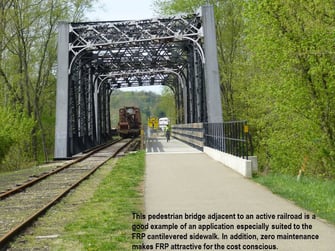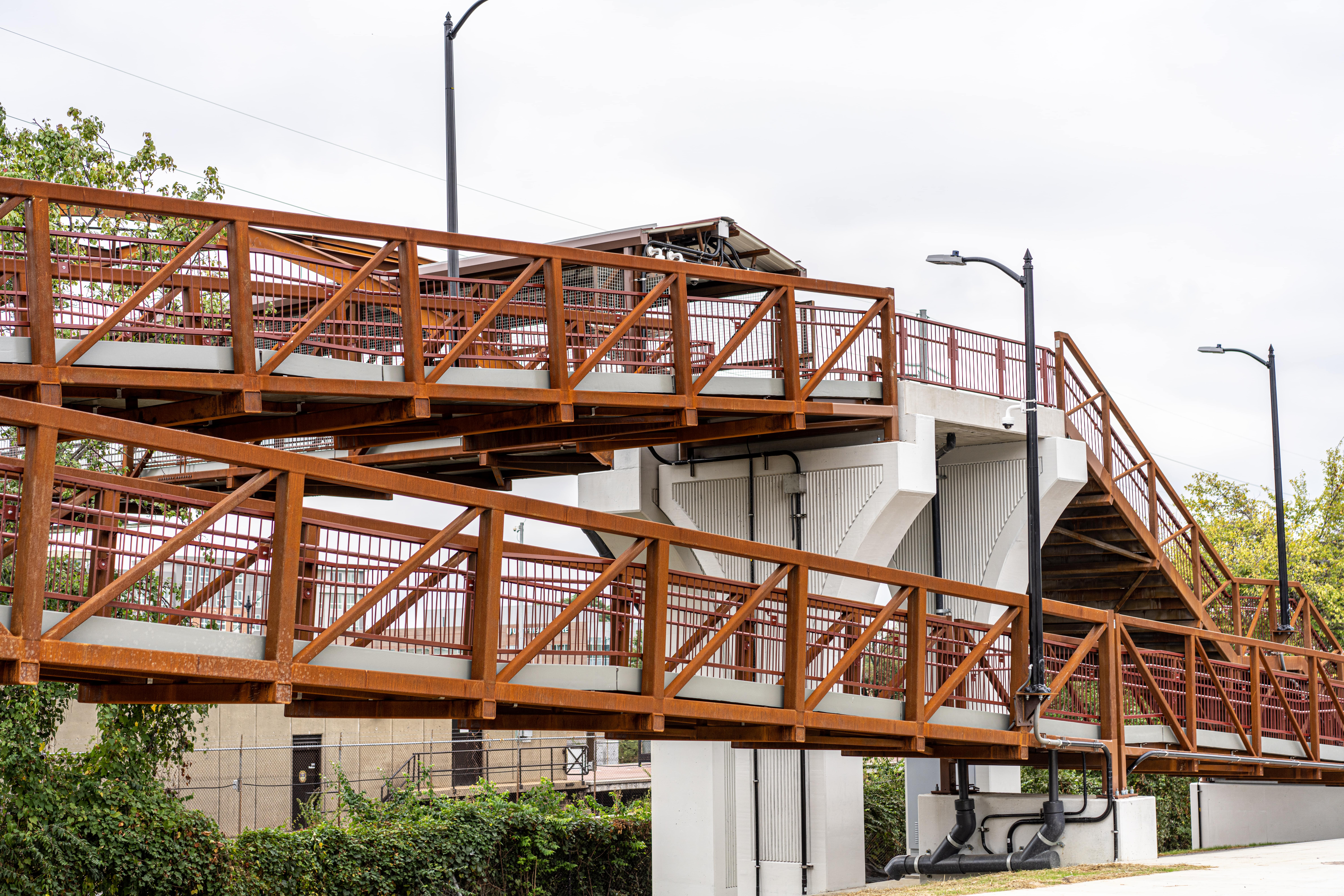Car-to-car communication, 3-D printing, social robots and “sense and avoid” drones all sound a bit like science fiction. The media is calling these 2015 headliners “disruptive” technologies or innovations. These terms, however, aren’t new. Clayton Christensen, the Kim B. Clark Professor of Business Administration at the Harvard Business School, coined the phrase in the late 1990s. It refers to the process by which a product or service takes root in simple applications at the bottom of a market, moves up the market and eventually has the potential to displace established competitors. A good example of this is one we can all relate to – cell phones. The popular mobile phone has all but displaced conventional land lines.
Are you wondering what all this has to do with advanced materials like FRP composites and their application in market spaces like bridge decks? Good!
There are several things happening on national and local levels that are pushing FRP bridge systems ahead of more traditional materials. Did you know that the American Society of Civil Engineers recently graded our nation’s infrastructure? Public Parks and Recreation, a category evaluated under the infrastructure umbrella, received a C-minus!
 A quick glance at the category shows a recent surge in park use, while local budgets continue to shrink. The parks and recreation sector contributes $646 billion to the nation’s economy, and Americans are returning in droves to the outdoors thanks to programs like the Rails-to-Trails Conservancy. Part of this is because people are living longer, are healthier and want to stay active. Yet the local budgets that support parks and recreation are dwindling, driving these agencies to look harder for ways to trim costs. FRP composite bridge decks, especially fiberglass bridge systems, are attracting attention because they last longer than steel, concrete or timber and require virtually no maintenance.
A quick glance at the category shows a recent surge in park use, while local budgets continue to shrink. The parks and recreation sector contributes $646 billion to the nation’s economy, and Americans are returning in droves to the outdoors thanks to programs like the Rails-to-Trails Conservancy. Part of this is because people are living longer, are healthier and want to stay active. Yet the local budgets that support parks and recreation are dwindling, driving these agencies to look harder for ways to trim costs. FRP composite bridge decks, especially fiberglass bridge systems, are attracting attention because they last longer than steel, concrete or timber and require virtually no maintenance.
Rails-to-Trails’ goal is for 90 percent of Americans to live within three miles of a trail system by 2020. Rail-trails, which are developed on former railroad corridors, are giving hikers access to more remote areas. This push into the wilderness creates a growing need to renovate abandoned trestle bridges or install new bridges, giving pedestrians safe passage over streams and rivers. This is another area where FRP bridge systems are being used thanks to the ease of transporting the lightweight panels into remote areas.
To tackle another emerging issue, the Conservancy has introduced Rail-With-Trails. This initiative works with rail companies and local governments to address pedestrian safety risks along rail lines. In the case of Rail-With-Trails, FRP cantilevered sidewalks are an ideal option in places where pedestrian paths run adjacent to an active railroad crossing. Design flexibility, corrosion resistance and fast installation make FRP bridge systems an obvious choice.
As trail programs continue to grow, FRP bridge systems and cantilevered sidewalks are joining the list of disruptive innovations! For more information on FRP cantilevered sidewalks or bridge decks, contact us today!

